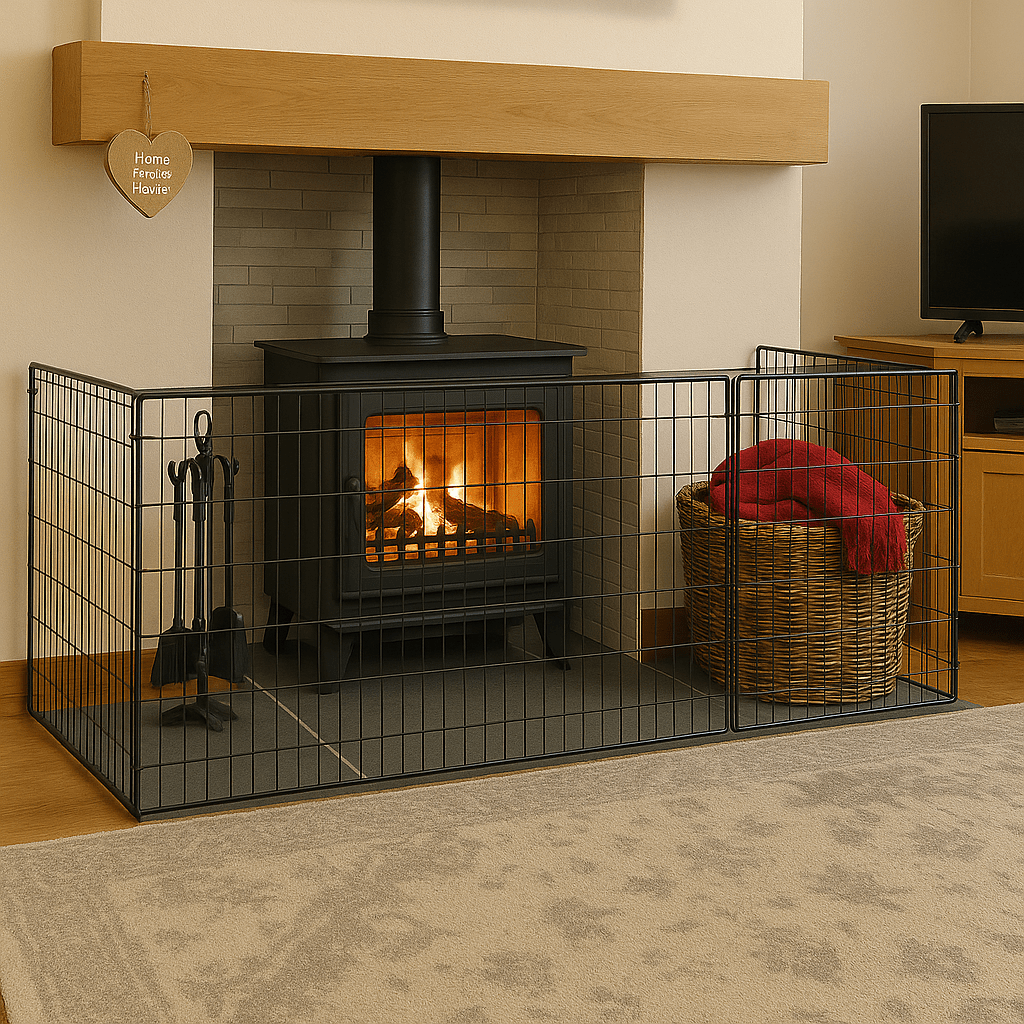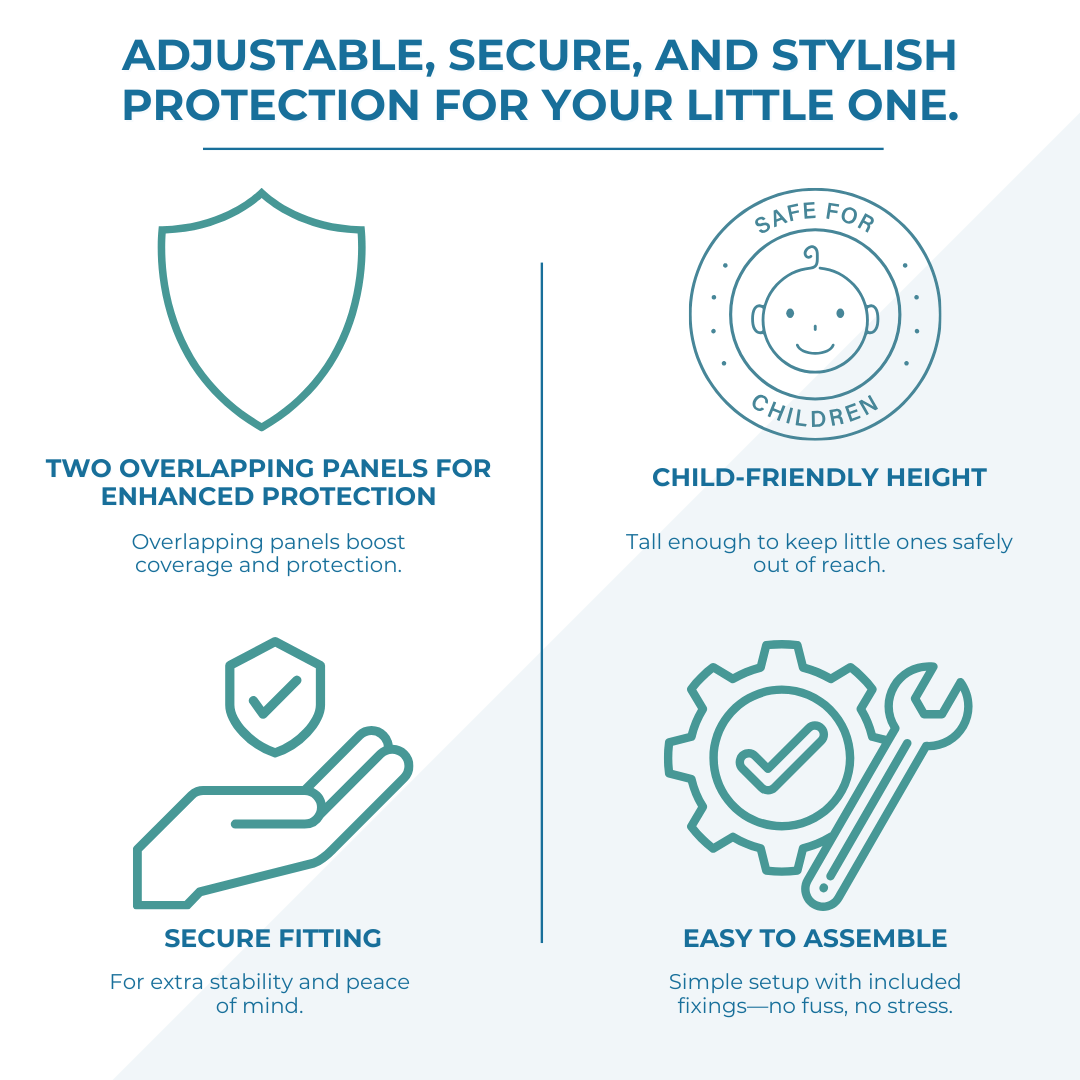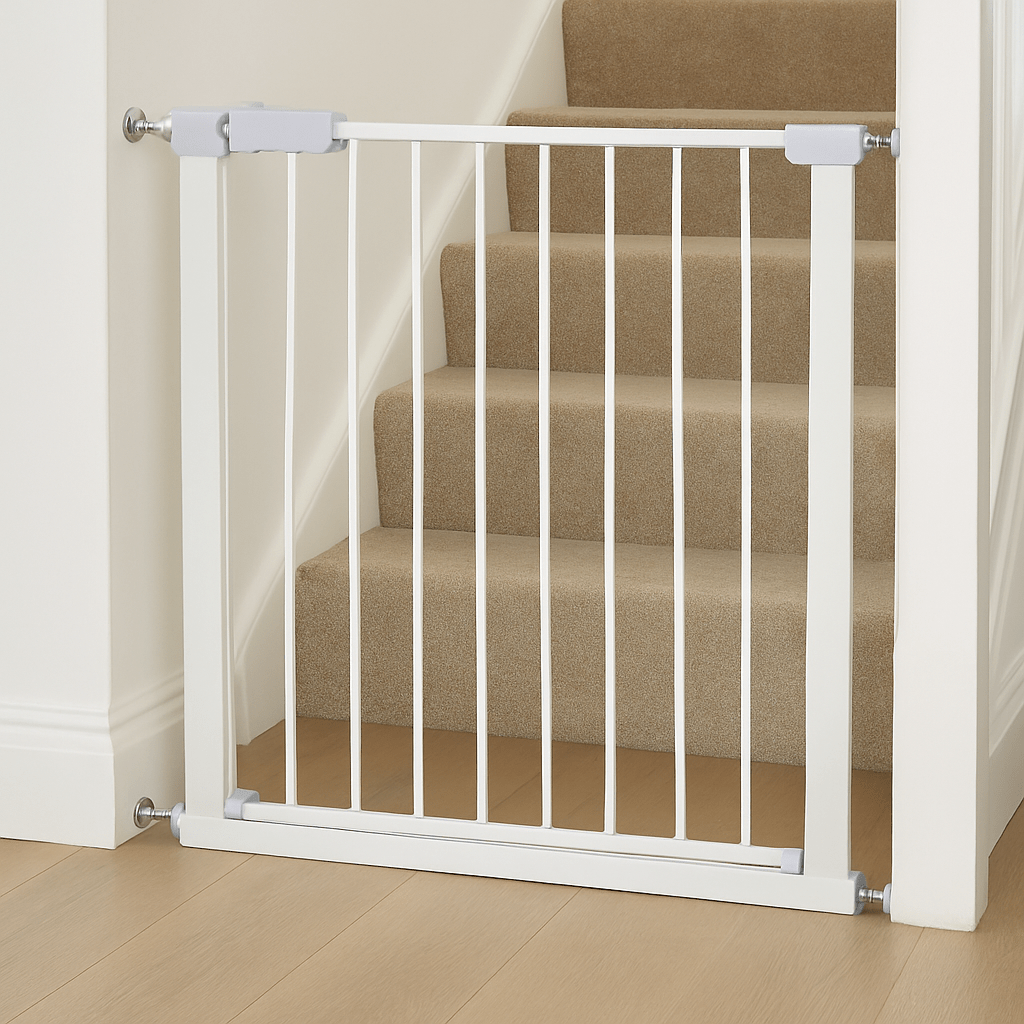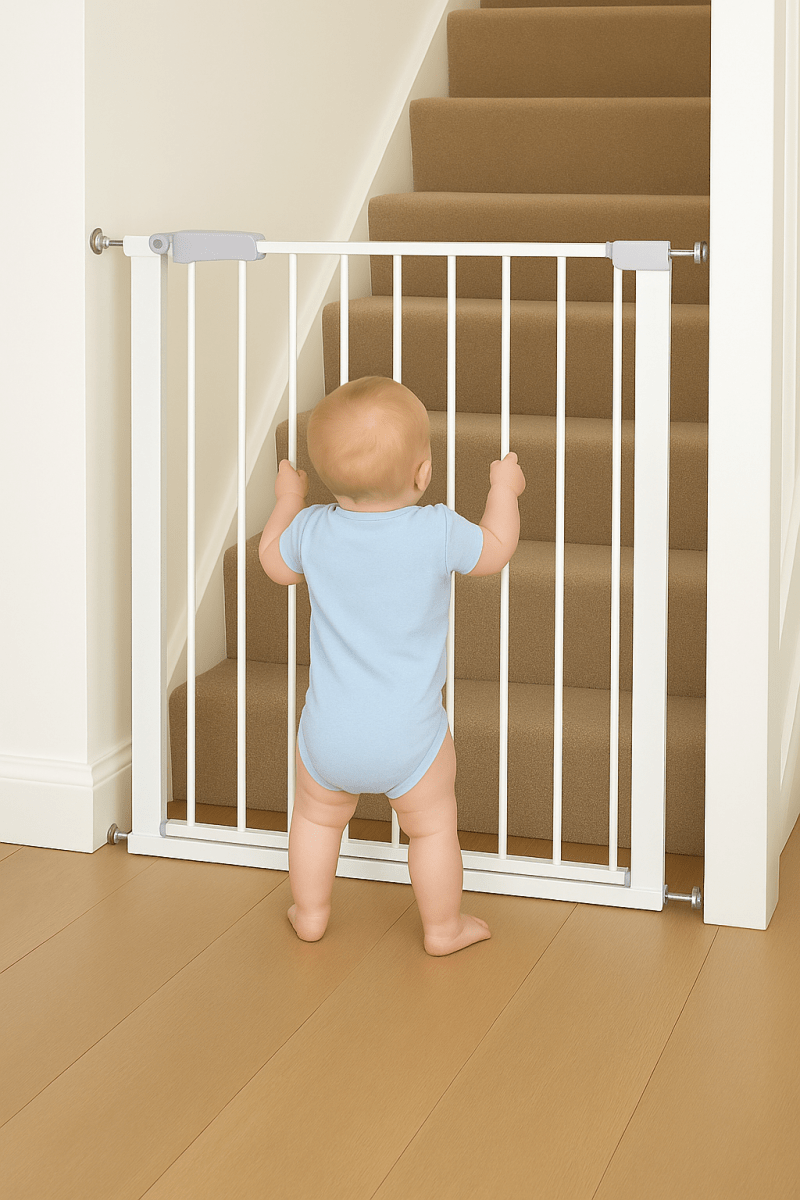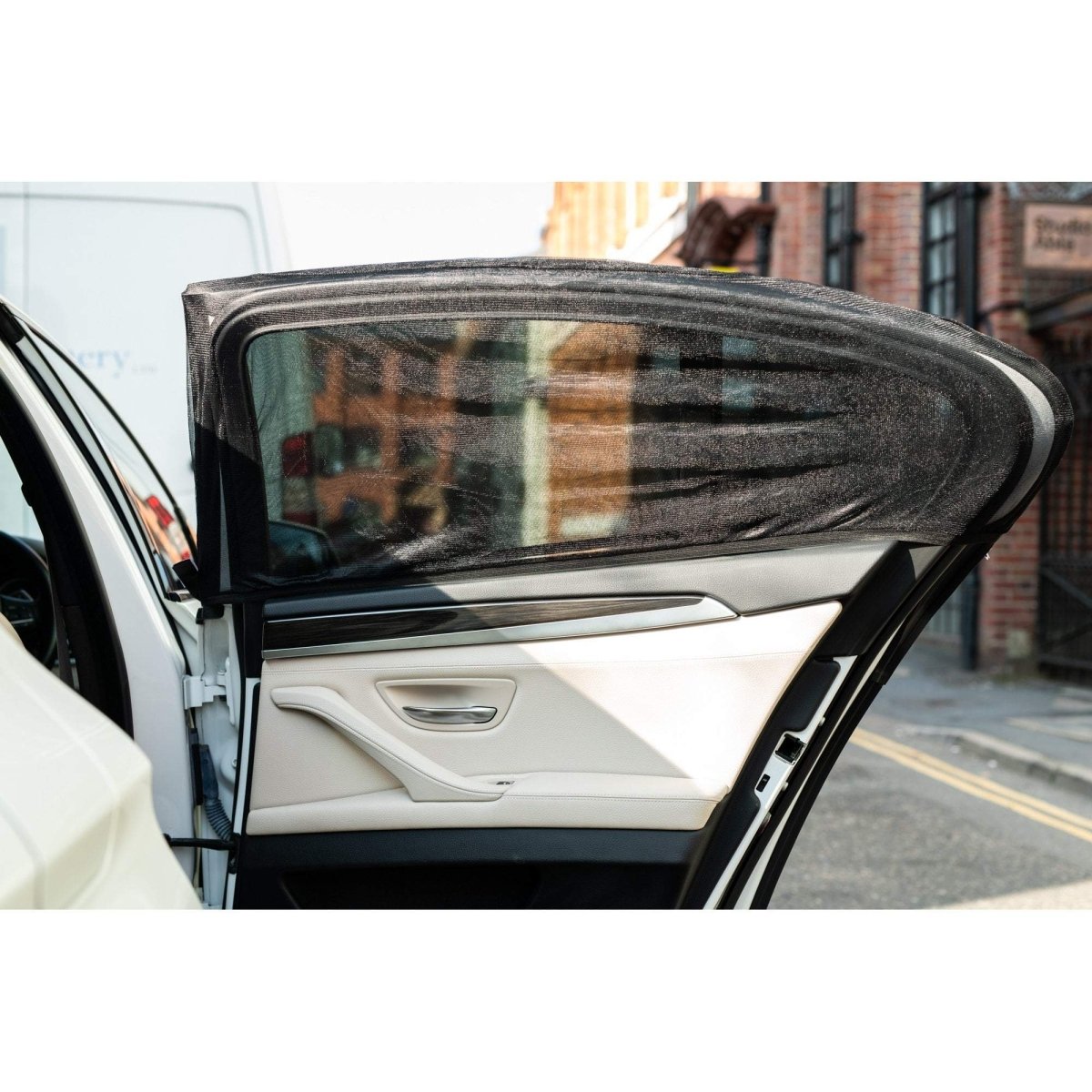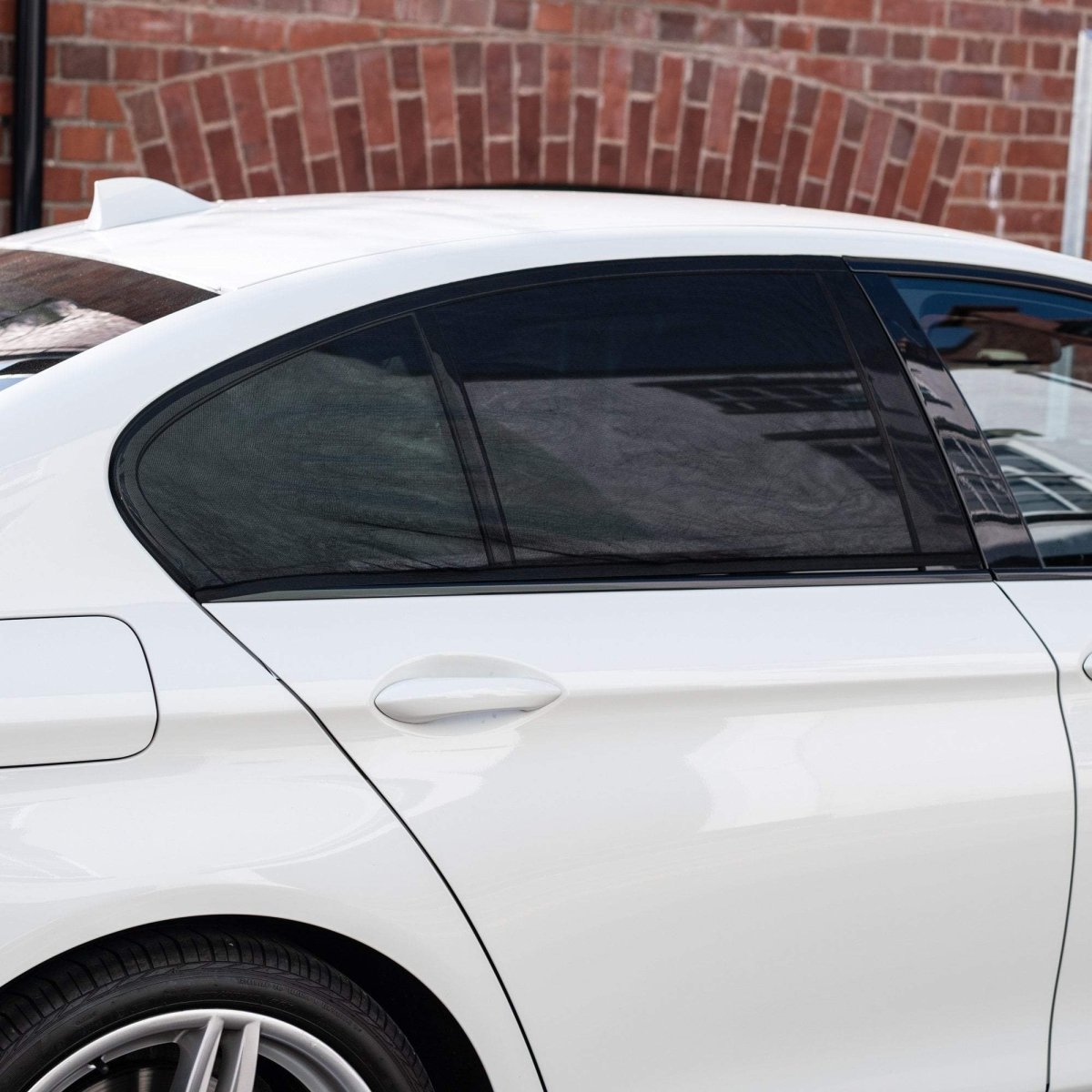Introduction
Hey there, busy parents! Are you ready to take on the exciting and challenging task of babyproofing your home? We know that keeping your little one safe is your top priority, and one of the most important areas to secure is those stairs. That's where a trusty stair gate comes in.
Choosing the right stair gate may seem like a daunting task, with so many options and features to consider. But fear not! We're here to guide you through the process and help you make the best decision for your home and your little explorer.
In this comprehensive guide, we'll cover everything you need to know about stair gates, from the different types and installation methods to important safety considerations. So let's dive in and ensure your home is a safe haven for your precious bundle of joy.
Types of Stair Gates: Hardware vs. Pressure-Mounted
When it comes to choosing the right stair gate for your home, you have two main options: hardware-mounted or pressure-mounted. Let's take a closer look at each type and their respective benefits.
- Hardware-mounted stair gates are installed using screws and brackets, making them a more permanent solution. They are typically made of metal and provide a sturdy barrier that can withstand the weight and strength of an active toddler. These gates are ideal for stairs, as they offer maximum security and are less likely to be dislodged or pushed through.
- On the other hand, pressure-mounted stair gates use tension to secure themselves in place. These gates rely on rubber stoppers or adjustable rods to create enough pressure against the walls or door frame, holding them securely without any need for drilling or screws. While they may not be as strong as hardware-mounted gates, pressure-mounted gates are great for areas where you need temporary or portable childproofing solutions.
It's important to consider your specific needs and circumstances when choosing between these two types of stair gates. If you have a particularly wide staircase or uneven surfaces, a hardware-mounted gate might be your best option for stability and security. However, if you're looking for versatility and ease of installation, a pressure-mounted gate can offer the convenience you need.
Remember, selecting the right stair gate is crucial in keeping your little ones safe and secure as they explore their surroundings.
Measure Your Stairway or Doorway: Get the Right Width and Height
When it comes to choosing the perfect stair gate for your home, it is crucial to measure your stairway or doorway correctly. The last thing you want is a gate that doesn't fit properly and leaves gaps where your little one can slip through. So grab your measuring tape and follow these simple steps:
- Measure the width: Start by measuring the width of your stairway or doorway at both the top and bottom. It's important to note that openings can sometimes vary in size, so taking multiple measurements will ensure you get the most accurate width.
- Consider extensions: If you find that your stairway or doorway is wider than the standard gate width, don't worry! Many gate manufacturers offer extensions that can be attached to increase the width range of the gate. Just make sure to check if extensions are compatible with the gate you choose.
- Measure the height: Next, measure the height of your stairway or doorway to ensure that the gate will provide adequate safety for your child. Keep in mind that some gates have adjustable heights, which can be useful if you have different areas of your home with varying heights.
By measuring your stairway or doorway accurately, you can confidently select a stair gate that fits snugly and provides maximum safety for your little one. Remember, it's always better to be safe than sorry when it comes to babyproofing your home!
Choose a Style: Bannister vs. Wall Mount vs. Retractable vs. Decorative
When it comes to choosing a stair gate for your home, there are several styles to consider. Each style offers different features and benefits, so it's important to select one that suits your specific needs.
- Bannister Stair Gate: This type of gate is designed to be attached to the banister or railing of your stairs. It provides a secure barrier while still allowing you easy access to the stairs when needed. Bannister gates are a great option if you have a sturdy banister and want a gate that can easily be removed or adjusted.
- Wall Mount Stair Gate: As the name suggests, this style of gate is mounted directly to the wall adjacent to the staircase. Wall mount gates are known for their stability and durability, making them an excellent choice for high-traffic areas or households with active children. They can be installed at the top or bottom of stairs and provide maximum security.
- Retractable Stair Gate: Retractable gates offer convenience and flexibility. They feature a mesh panel that can be easily extended or retracted as needed, allowing you to create a barrier when necessary and then retract it when not in use. These gates are ideal if you're looking for a gate that is easy to install and doesn't require permanent fixtures.
- Decorative Stair Gate: If you're looking for a stair gate that complements your home's interior design, a decorative gate might be the perfect option for you. These gates are available in various styles, finishes, and materials to match your home decor while still providing safety features for your little one.
Consider factors such as the layout of your staircase, the age of your child, and any specific safety concerns when choosing the right style of
Consider the Material: Metal vs Wood vs Plastic
When it comes to choosing the right stair gate for your home, one important consideration is the material it is made of. There are several options available, each with its own advantages and disadvantages.
### Metal
Metal stair gates are known for their durability and strength. They are often made of steel or aluminium, making them sturdy and able to withstand the wear and tear of daily use. Metal gates are also typically more difficult for children to climb, providing an added level of safety. Additionally, metal gates can be easily cleaned and maintained, making them a practical choice for busy households.
### Wood
Wooden stair gates can add a touch of warmth and elegance to your home decor. They are often made of hardwoods like oak or birch, which are known for their strength and durability. Wood gates can be easily painted or stained to match your existing interior design. However, it is important to note that wood is more susceptible to damage from moisture or rough handling, so regular maintenance and upkeep may be required.
### Plastic
Plastic stair gates are lightweight and easy to instal, making them a popular choice for many parents. They are often made of high-quality, non-toxic materials that are safe for children. Plastic gates are also typically more affordable than metal or wood options. However, it is important to choose a plastic gate that is sturdy and durable, as some may not be able to withstand the pressure of a determined child.
When choosing the material for your stair gate, consider your specific needs and preferences, as well as the overall style and design of your home. Ultimately, the right material will depend on factors such as durability, aesthetics, and ease of maintenance.
Additional Features to Look For: Double Locking, Pet-Friendly, Auto-Close
When it comes to choosing the right stair gate for your home, there are a few additional features that you should consider. These features can enhance the safety and convenience of the gate, making it easier for you to babyproof your home and ensure the safety of your child.
### Double Locking Mechanism
One important feature to look for in a stair gate is a double locking mechanism. This provides an extra layer of security, preventing your child from accidentally opening the gate and accessing the stairs. Look for gates that have a lock on both the top and bottom, ensuring that the gate remains securely closed at all times.
### Pet-Friendly Design
If you have pets in your home, it’s important to choose a stair gate that is also pet-friendly. Look for gates that have a small pet door or a design that allows your pets to easily pass through the gate while keeping your child safely contained. This way, you can create a barrier for your child without restricting the movement of your furry friends.
### Auto-Close Feature
An auto-close feature can be incredibly convenient, especially when you have your hands full with a baby or other tasks. This feature ensures that the gate automatically closes and locks behind you when you pass through, providing a hassle-free solution to keeping your child safe without having to remember to close the gate every time.
By considering these additional features in your search for the perfect stair gate, you can find a gate that not only provides the necessary safety measures but also offers added convenience and peace of mind for you and your family.
Installation Tips: How to Instal Your Stair Gate Securely and Properly
Installing a stair gate is an essential part of babyproofing your home and ensuring your child's safety. Here are some installation tips to help you install your stair gate securely and properly:
- Measure and Choose the Right Gate: Before purchasing a stair gate, measure the width of your staircase or doorway to ensure you choose a gate that fits properly. Most gates are adjustable and can fit a range of widths, but it's important to check the manufacturer's specifications.
- Read the Instructions: Each stair gate may have specific installation instructions, so be sure to read and follow them carefully. This will ensure that the gate is installed correctly and securely.
- Determine the Mounting Method: Stair gates can be mounted using pressure-mounted or hardware-mounted methods. Pressure-mounted gates are easy to install and do not require drilling, but they are best suited for areas with low to moderate traffic. Hardware-mounted gates, on the other hand, are more secure and recommended for areas with high traffic or for use at the top of stairs.
- Position the Gate: Place the gate at the top or bottom of the stairs, or in the doorway, depending on your needs. Make sure the gate is positioned correctly and securely before installing.
- Secure the Mounting Hardware: If you are using a hardware-mounted gate, use the provided screws or brackets to secure the gate to the wall or door frame. Ensure that the screws are tight and the gate is stable.
- Test the Gate: Once the gate is installed, test it to make sure it is secure and functioning properly. Apply pressure to the gate from different angles to ensure it can withstand the force. If the gate is not secure or if there are any issues, recheck the installation or consult the manufacturer's instructions.
By following these installation tips, you can ensure that your stair gate is installed securely and properly, providing a safe environment for your child and peace of mind for you.
Conclusion
In conclusion, choosing the right stair gate for your home is an essential step in babyproofing and ensuring the safety of your child. With the wide variety of options available, it's important to consider factors such as the type of gate, installation method, and durability. Remember to measure your stairway accurately and consider any additional features you may need, such as extensions or auto-close mechanisms.
Investing in a high-quality stair gate will provide you with peace of mind, knowing that your child is protected from potential accidents or falls. Take the time to research and compare different brands and models to find the perfect fit for your home and your specific needs.
Remember, babyproofing your home goes beyond just installing a stair gate. It's important to create a safe environment by addressing other potential hazards, such as securing furniture, covering electrical outlets, and removing small objects that could be choking hazards. By taking these steps, you can create a safe and secure space for your little one to explore and grow.

